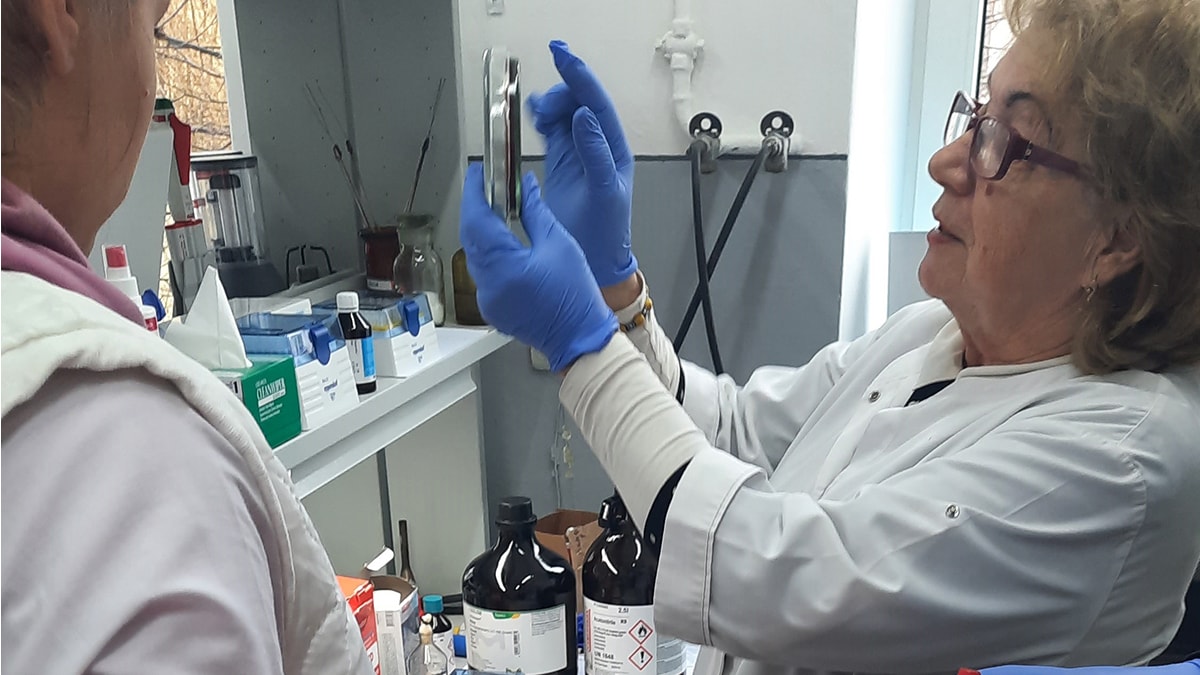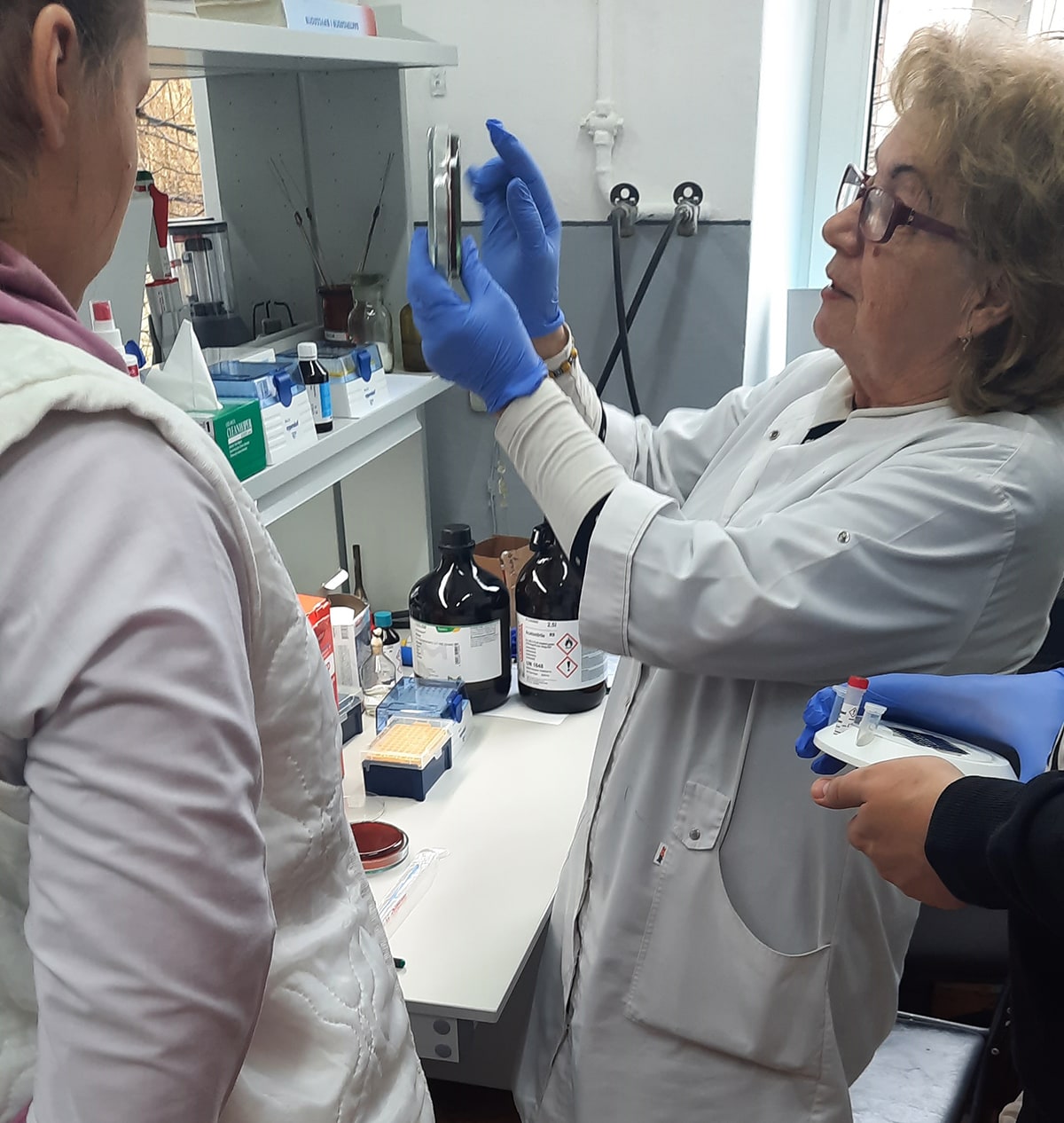Key points
- The war in Ukraine has stressed Ukraine's health systems, creating an environment where antimicrobial-resistant bacteria can thrive and quickly spread within the country and across borders.
- CDC and global partners are supporting the government of Ukraine to improve laboratory practices in the country, an important first step to protect people from antimicrobial resistance (AR).

AR in Ukraine
Russia's full-scale invasion of Ukraine, starting in February 2022, has dramatically increased the number of wounded patients needing care. At the same time, healthcare facilities have been under attack, damaging infrastructure which, combined with shortages of staff and supplies, limits care.
These factors increase stress on Ukraine's health systems and healthcare providers, infection prevention and control practices, and antibiotic prescribing practices. This stress creates an environment where antimicrobial-resistant bacteria can thrive and quickly spread, increasing the risk of difficult-to-treat infections.
Increased stress on health systems speeds global AR spread
As Ukrainian refugees flee the war and injured soldiers and civilians are evacuated for urgent medical care, these dangerous bacteria are now spreading beyond Ukraine's borders. They have been detected in at least six European countries and as far away as Japan.
Improving AR detection
By improving its ability to detect AR, Ukraine can have an accurate understanding of the AR situation and respond with appropriate infection control measures. Reducing the spread of AR will protect Ukrainian civilians, soldiers, and allies in the region, and ultimately protect Americans by reducing the likelihood of further global spread.
CDC, together with ICAP at Columbia University, the World Health Organization (WHO) Regional Office for Europe, the WHO Country Office in Ukraine, the European Society for Clinical Microbiology and Infectious Diseases (ESCMID), and the Association of Public Health Laboratories (APHL), is helping Ukraine to improve AR detection by:
- Supporting laboratory training
- Providing modern lab equipment
- Developing standardized procedures to integrate new equipment and testing processes into laboratory workflows
- Helping partners implement improvement plans

Improved lab practices
To develop improvement plans and monitor results, six Ukrainian hospital and regional public health center laboratories completed CDC's Lab Assessment of Antibiotic Resistance Testing Capacity (LAARC). The LAARC is specifically designed to help low- and middle-income countries identify and correct laboratory practices that contribute to inaccurate AR data. It evaluates 15 different domains of laboratory practice, including:
- Quality of organism identification and antibiotic susceptibility testing
- Patient sample collection, transport, and management
- Preparation of lab testing supplies
- Data management
Participants used LAARC results to help develop improvement plans, and CDC and partners assisted with implementing these plans over the following year.
Laboratory improvement
The highest performing laboratory achieved an overall LAARC score of 88%, a 22% increase from its initial score (see Figure 1 for more details).
Specific areas where participating laboratories showed the greatest improvement included quality assurance, organism identification methods and associated procedures, and policies and analyses for antibiotic susceptibility panels.
Continuing to improve LAARC scores while sustaining the gains made in laboratory capacity building is critical for AR detection.
Continued efforts
CDC and its partners continue to work to improve AR detection in Ukraine. Ongoing efforts include:
- Assisting the national public health center, three hospitals and three regional public health centers in Western Ukraine.
- Expanding assistance to additional healthcare facilities, including one closer to the frontlines where the war-wounded receive initial care.
- Increasing the previously low rate of specimen collection from wounded patients for improvement of both clinical treatment and surveillance data.
- Supporting development of AR trend summaries to monitor the results of infection prevention interventions.
- Providing trainings on whole genome sequencing, to investigate outbreaks and better understand how AR is spreading.
- Building capacity at the national reference lab to detect the most common and concerning causes of AR.
Laboratory data and AR response activities go hand in hand
Learn more about what CDC and global partners are doing to detect AR and prevent infections with antimicrobial-resistant bacteria.
